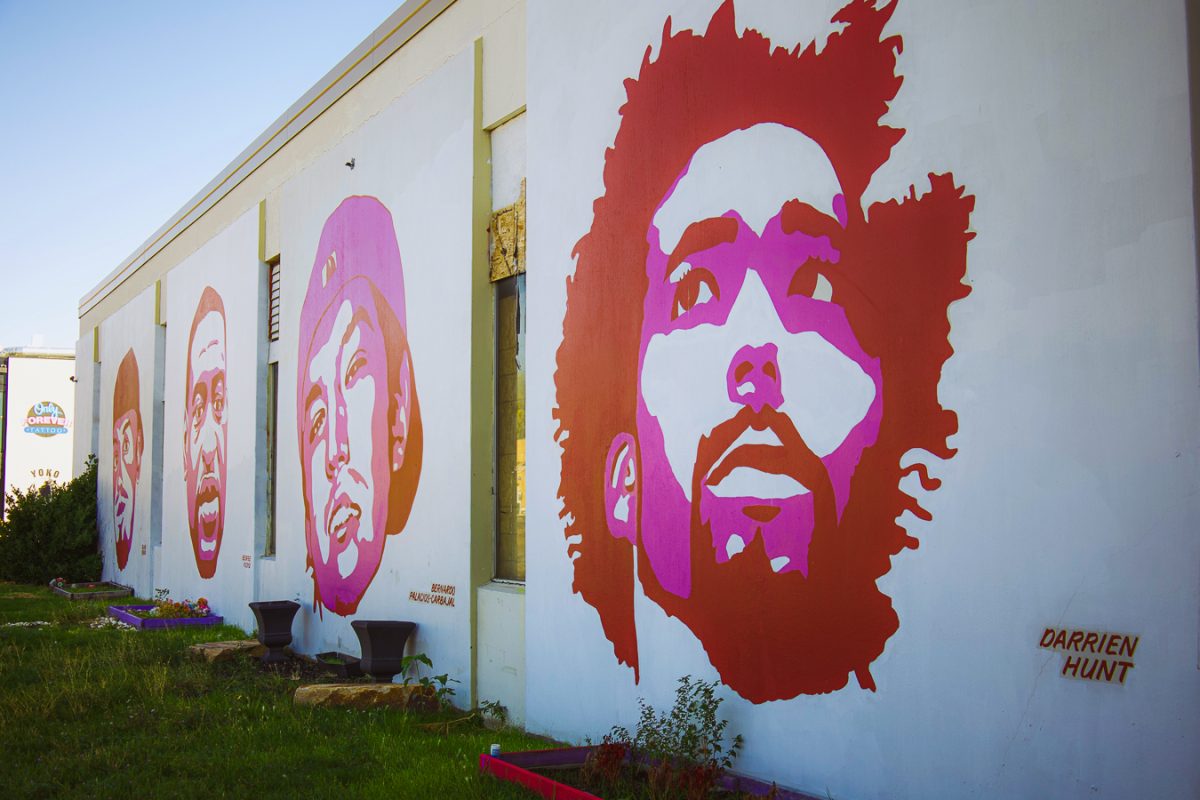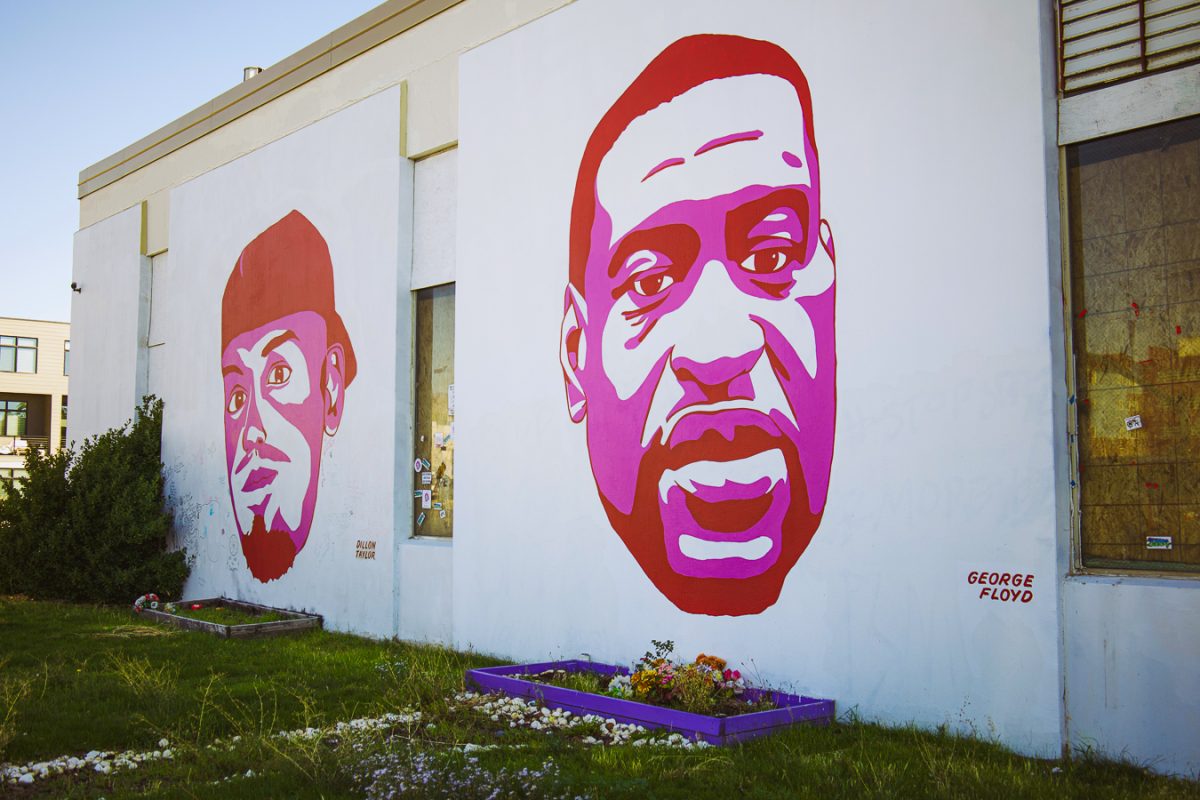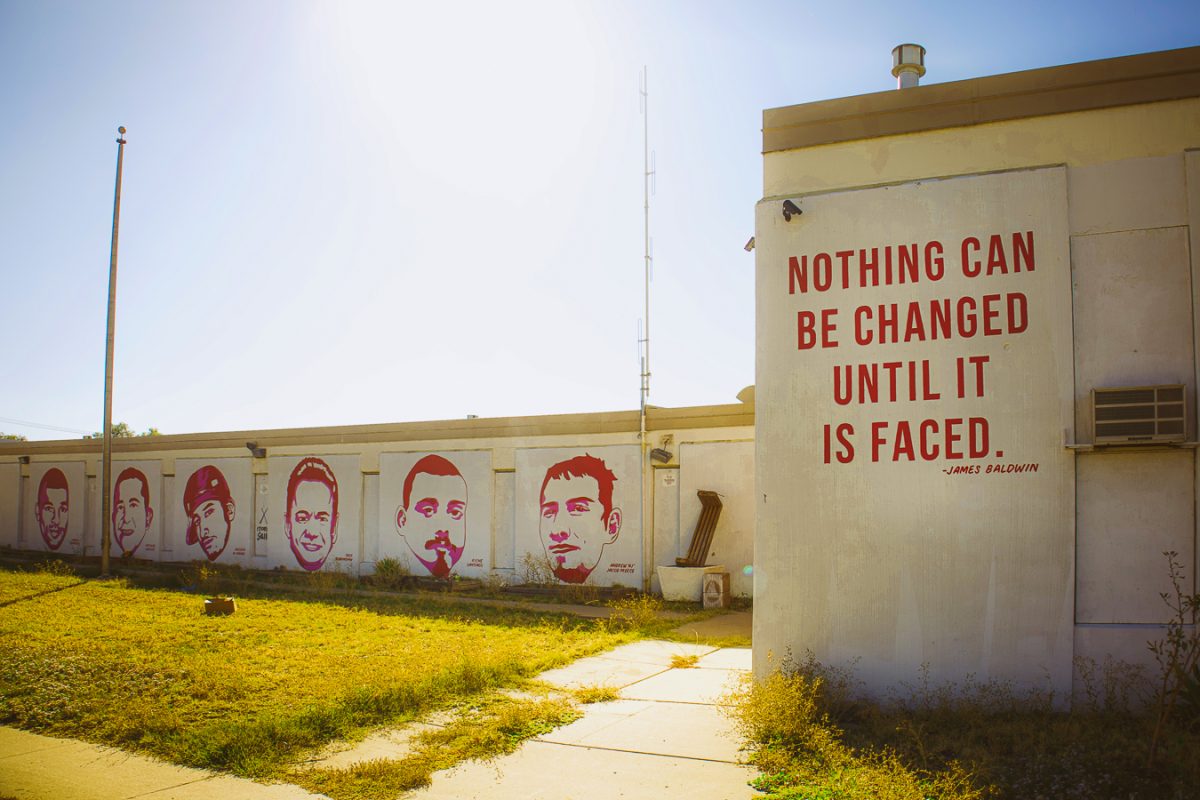
Minh Vuong
The Fleet Block Murals, which depict victims of police brutality, along industrial buildings on 300 West in Salt Lake City on Oct. 6, 2023. (Photo by Minh "Polaris" Vuong | The Daily Utah Chronicle)
On the corner of 300 West and 800 South, the walls of the abandoned buildings of Salt Lake City’s fleet storage facilities, also known as Fleet Block, are lined with over 20 murals depicting victims of police brutality.
The faces, painted in pink and red, sit above planter boxes. Some planters are filled with artificial flowers, others have green leaves of flowering plants or shrubs growing from the dirt.
“Mourn the dead and fight for the living” is written in the middle of the murals. Below them is a series of benches and a box where people leave water, food or other supplies for those who need it.
The murals, which have been painted by an anonymous group of artists, started going up in 2020 after George Floyd’s death. Floyd was the first person to be memorialized here. Soon, his face was surrounded by Utahns who had also been victims of police brutality.

However, due to a proposal to rezone the block, the future of these murals is now uncertain.
What is a Rezone?
Cities use zoning to define areas of land by their use. For example, a commercial zone means buildings and development in that area will be used commercially. This could be in the form of office or retail buildings. Each zone has its own regulations which impact things like design standards and building permits.
A rezoning would change the current zoning of an area to another kind. In the case of Fleet Block, the city is proposing to change the zoning from public lands to a new kind of zone called a Form-Based Urban Neighborhood.
According to the proposal’s webpage, “form-based zoning focuses on buildings’ physical form and design rather than their specific use.” This means the zoning would regulate how new buildings fit in a space and what they look like. The buildings themselves could be used for a wide range of purposes.
Purpose
Objectives for the rezone, as the city states, are to create an environment where families and industry can coexist, encourage the mix of different types of land use and improve connections based on people’s needs.
However, the proposal has received pushback. Both families of victims memorialized in the murals and members of the community have criticized the way the city has approached this rezone.
“We met [with the city] and we had these dialogues about what was needed here, and they did a lot of pushback,” said Rae Duckworth, operating chairperson of Black Lives Matter Utah. Duckworth’s cousin, Bobby Ray Duckworth, is depicted in the murals.
Duckworth said the families whose loved ones are memorialized on Fleet Block and the Black Lives Matter Utah Chapter proposed several ideas to the city for improvements that could be implemented under the block’s current zoning.
“We have submitted ideas like a community center [that] provides multiple levels of types of resources, from a mental health block to a ‘get on your feet’ block,” Duckworth said. “There’s just pushback because they want the zone to go their way.”
The Best and Worst of SLC
Duckworth’s perspective of this potential rezone was echoed by community members during a City Council meeting on Sept. 5.
“The people that I have met through the murals and the work that I’ve been able to be a part of through the murals represent the very best of Salt Lake City,” Ilana Raskind said to the council. “The city’s response over and over again honestly represents some of the worst I’ve seen in Salt Lake City. It’s clear that the families are not being listened to.”
“We’re supportive of urban improvement, our family is and the other families are,” said Tiffany James, whose son Zane James is depicted in the murals. “But in general we’re just disappointed that the efforts by the city have been to whitewash the existence and the meaning behind the murals as they do this redevelopment.”
Several other commenters during the meeting reiterated the importance of the murals and the opportunity for education and healing that they have provided.
“Everybody met here — I’ve met every type of person you could think of — has sat by this mural and has appreciated this mural, or has expressed interest in this mural,” Duckworth said.
It’s disappointing, Duckworth expressed, to watch the city disregard ideas that could make a change for the better. It’s upsetting, she said, to watch the city disregard her as a Black woman and actively take steps that would harm marginalized communities in Salt Lake City.
It’s frustrating, Duckworth said, to watch the city overlook concerns brought to them again and again.
j.hinds@dailyutahchronicle.com
@JosiHinds

